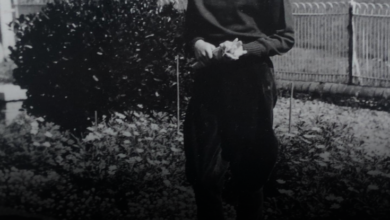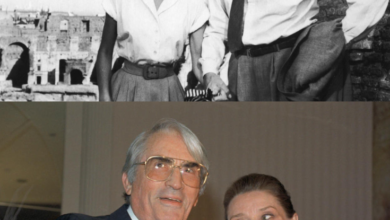Why Marilyn Monroe’s Childhood Home Near the Hollywood Bowl Was Lost to Time – And What It Means for Her Legacy!
OPINION: This article may contain commentary which reflects the author's opinion.
Long before she became one of the world’s most iconic stars, Marilyn Monroe—then known as Norma Jeane Mortenson—lived a life far removed from the glitz and glamour of Hollywood. Her early years were marked by instability, financial hardship, and a string of foster homes, culminating in a brief yet meaningful period of stability in a small Hollywood house. Today, this residence, tied to Monroe’s formative years, remains largely overlooked in the annals of Hollywood history.
A Child’s Early Struggles
Born on June 1, 1926, in Los Angeles, Monroe faced a tumultuous upbringing. Her father was absent, and her mother, Gladys Baker, struggled with mental health issues and financial instability. From the time she was just two weeks old, Monroe lived with foster parents in Hawthorne, California. She spent her first seven years at 4201 West 134th Street, a modest house where she had some contact with her mother, who visited regularly.
In the summer of 1933, when Monroe was seven, Gladys managed to purchase a small house on Arbol Drive, near the Hollywood Bowl. It was an attempt to provide her daughter with a stable home life—one that included the comfort of a white baby grand piano bought at an estate sale. For a short time, Monroe experienced a semblance of normalcy, living in a house described as having three bedrooms, a shingle roof, and a portico entrance. However, this period of stability was short-lived.
The Home at Arbol Drive
This house, located at what was believed to be 6812 Arbol Drive, stood in a prime spot near one of Los Angeles’ most famous cultural landmarks. While the Hollywood Bowl loomed nearby, representing the epicenter of entertainment and glamour, Monroe’s life inside the home was far from the Hollywood dream. Within a year of moving in, Gladys suffered a mental breakdown and was institutionalized, leaving Monroe’s life in turmoil once again.
The property on Arbol Drive holds unique historical value. It was not only one of the few stable residences Monroe knew as a child but also a rare physical link to her pre-fame years. Yet, today, its exact location is uncertain. The house’s address no longer appears in real estate records, and it lacks any official historical designation. It’s as if this piece of Monroe’s history has faded from collective memory.
Why Has It Been Forgotten?
Several factors contribute to the home’s obscurity. Unlike the Brentwood house where Monroe spent her final days—now preserved and widely recognized—her childhood residence near the Hollywood Bowl was never given historic status. It may have been demolished, renamed, or simply overlooked as Monroe’s stardom overshadowed her early struggles. While her death and subsequent Hollywood legacy have been endlessly memorialized, her challenging upbringing remains a lesser-known chapter.
Additionally, Monroe’s childhood home near Hollywood wasn’t tied to any of her career milestones. By the time she became a star, her connection to that house had faded into the background of her life story. The absence of well-documented preservation efforts or official recognition from the city of Los Angeles further cemented its “forgotten” status.
A Hidden Link to Hollywood’s Heart
Despite its obscurity, the home’s location near the Hollywood Bowl ties it to the heart of the entertainment industry. It is, in essence, a piece of pre-stardom Hollywood history—an emblem of a struggling child who would later become a global icon. The house serves as a reminder that Monroe’s rise to fame was shaped not only by her undeniable talent and beauty but also by her resilience in overcoming a difficult start.
Preserving a Piece of History
Monroe’s legacy has long been associated with the glamour and tragedy of her later years. However, the preservation of her childhood home—or at least the recognition of its historical significance—could add depth to the narrative of a star who overcame immense personal challenges. Such a site would offer fans and historians a more complete understanding of how Monroe’s early life informed her later persona.
As it stands, Marilyn Monroe’s childhood home near the Hollywood Bowl remains a forgotten piece of Hollywood history, its significance hidden in the shadows of her later fame. By revisiting and acknowledging this small but pivotal chapter in her life, we not only honor Monroe’s legacy but also preserve an overlooked piece of the city’s cultural heritage.



